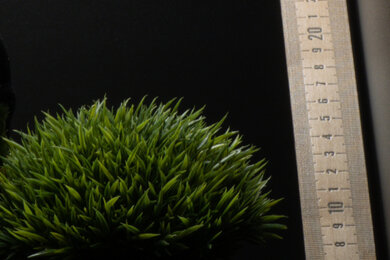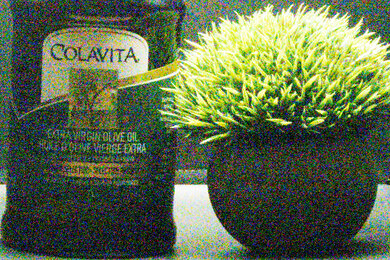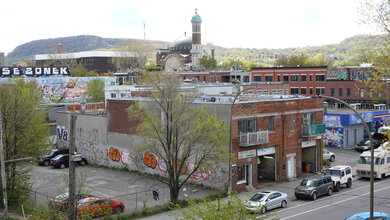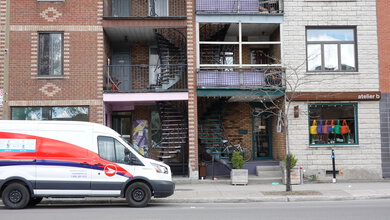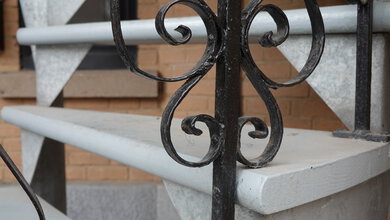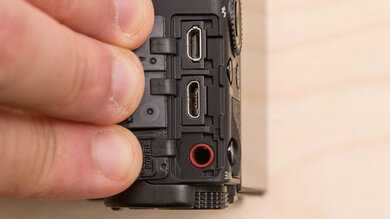The Sony RX100 VII is a versatile compact zoom camera. It offers good overall image quality for its class and features an effective autofocus system. It's also incredibly lightweight and portable, making it easy to bring with you throughout the day. Depending on your choice of settings and usage habits, its battery life is also on the short side, and its lack of a handgrip, small size, and smooth-finish body makes it tricky to maintain a secure hold.
Our Verdict
The Sony RX100 VII is good for travel photography. Image quality out-of-the-box is good for its class, and its autofocus system does a good job of tracking moving subjects and objects. Unfortunately, the camera's small size and lack of a dedicated hand grip can make it feel somewhat cramped in the hand, but it's an incredibly portable camera that you can bring almost anywhere your travels take you. That said, its battery life is quite limited, so you might need an extra battery.
-
Remarkably compact and lightweight.
-
Good overall autofocus system.
-
Good image quality for its class.
-
Lacking in ergonomics.
-
Short battery life.
The Sony RX100 VII is okay for landscape photography. Image quality is good for its class, with a fair dynamic range and decent sharpness. It also has an in-camera HDR shooting mode that allows you to capture a broader range of detail in high-contrast environments. That said, it still can't capture as much detail or dynamic range as a camera with a larger sensor would. Also, while the camera feels decently sturdy, it isn't rated as weather-sealed, and its compact size makes it somewhat uncomfortable to hold.
-
Remarkably compact and lightweight.
-
Good image quality for its class.
-
Tilting screen is bright and sharp.
-
Lacking in ergonomics.
-
Short battery life.
-
Not weather or impact-resistant.
The Sony RX100 VII is decent for sports and wildlife photography if you need something compact. It has a fairly effective autofocus system for its class, as well as blackout-free burst shooting. The stacked design of its sensor also allows for a very quick max burst rate. Plus, it captures good image quality for its sensor size, and its built-in Zeiss lens has a fairly long maximum focal length, making it easy to capture photos of far-away subjects. Unfortunately, its small size can make it feel somewhat cramped in the hand.
-
Good overall autofocus system.
-
Very quick max burst rate.
-
Good image quality for its class.
-
Lacking in ergonomics.
-
Short battery life.
The Sony RX100 VII has unremarkable RAW photo performance, but it's still good for its class. Its noise handling is middling, so it isn't well-suited to low-light conditions. Its dynamic range is also mediocre, so the range of detail will be limited in high-contrast scenes. However, its sensor has a fairly high resolution for its size, so images look reasonably sharp and detailed.
-
Relatively high resolution captures crisp images.
-
Disappointing noise performance in low light.
The Sony RX100 VII is decent for vlogging, though this isn't its intended use. Its tilting screen can flip all the way up to face you, allowing you to monitor yourself as you record, and the camera's lightweight construction makes it easy to carry around, even for long shooting sessions. Its autofocus system also does an excellent job of tracking faces, ensuring you stay in focus. Video quality is reasonably sharp and detailed as long as you record well-lit environments. On the downside, depending on your usage habits and choice of settings, its battery drains quite quickly. It also overheats very easily when shooting in 4k.
-
Remarkably compact and lightweight.
-
Good overall autofocus system.
-
Good overall video stabilization performance.
-
Short battery life.
-
Mediocre video quality in dim environments.
-
Overheats fairly easily, especially in 4k.
The Sony RX100 VII isn't intended for studio video. Video quality is okay overall, though footage recorded in FHD and 4k can look a little soft and noisy in poorly lit environments. Its menu system is also somewhat hard to navigate. Out-of-the-box, the camera only records 4k video in five-minute increments, but this extends to 30 minutes if you change its 'Auto Power OFF Temp.' setting to 'High.' However, using it this way can result in the camera overheating, though it can also overheat during shorter recording sessions. Thankfully, its autofocus system is very effective at tracking moving subjects in video. The camera also supports Log shooting profiles, yielding a wider dynamic range while recording video and greater flexibility when color-grading your footage, though its internal recording capability isn't really suited to advanced video work, limiting how much you'll actually get out of using Log format.
-
Good overall autofocus system.
-
Includes Log picture profile.
-
Mediocre video quality in dim environments.
-
Overheats fairly easily, especially in 4k.
The Sony RX100 VII isn't designed for action video. While it's small, lightweight, and decently sturdy, it isn't meant for mounting on a chest or a helmet rig, and the camera isn't rated as water or impact-resistant. It's also incapable of shooting at more than 30 fps in 4k, which isn't conducive to recording smooth action video, but it can record at up to 120 fps in FHD. It also does a good job of smoothing out camera shake overall.
-
Remarkably compact and lightweight.
-
Good overall video stabilization performance.
-
Short battery life.
-
Not weather or impact-resistant.
-
Mediocre video quality in dim environments.
- 7.3 Travel Photography
- 6.8 Landscape Photography
- 7.2 Sport & Wildlife Photography
- 6.3 Raw Photo Performance
- 7.3 Vlogging
- 6.8 Studio Video
- 5.2 Action Video
- Updated Apr 22, 2024: We updated the review's 'Our Verdict' section, including the Pros/Cons, to match the camera's current scores and more accurately reflect its performance.
- Updated Feb 21, 2024: Added mention of the RICOH GR IIIx in the 'Differences Between Variants' section.
- Updated Jan 29, 2024: Added text to the 'Raw Photo Performance' verdict box.
- Updated Jan 29, 2024: Converted to Test Bench 0.12.1.
- Updated Jul 21, 2023: Added a link to the Sony ZV-1 II in the 'Screen' box.
- Updated May 29, 2023: Added a link to the Leica D-Lux 7 to the 'Body' section.
- Updated Apr 05, 2023: Converted to Test Bench 0.12.
- Updated Jan 23, 2023: Converted to Test Bench 0.11.
- Updated Sep 16, 2022: Converted to Test Bench 0.10.
- Updated Aug 05, 2022: Converted to Test Bench 0.9.
- Updated Apr 22, 2022: Converted to Test Bench 0.8.
- Updated May 18, 2021: Review published.
- Updated May 14, 2021: Early access published.
- Updated Apr 16, 2021: Our testers have started testing this product.
- Updated Apr 16, 2021: The product has arrived in our lab, and our testers will start evaluating it soon.
Differences Between Sizes And Variants
The Sony RX100 VII only comes in one color variant: Black. You can see its label here.
Let us know if you encounter another variant, and we'll update our review.
Compared To Other Cameras
The Sony RX100 VII and the RICOH GR III are both excellent premium compact cameras, but they're aimed at different users. The Sony is more of an all-arounder, with a versatile zoom lens, tilting screen, pop-up EVF, and better video capabilities. Conversely, the RICOH is aimed more at street photographers and enthusiasts who care about image quality. It uses a larger sensor with better dynamic range and low-light performance and a prime lens, but otherwise, it lacks some of the frills and extras found on the Sony, with no viewfinder, no tilt-out screen, and very limited video features.
The Sony RX100 VII and the RICOH GR IIIx are both excellent premium point-and-shoots, though they're aimed at different uses. Both are extremely portable, but the Sony uses a 1-inch type sensor and a zoom lens, while the RICOH uses a larger APS-C sensor and a fixed focal-length lens. The RICOH is better for street photographers and enthusiasts who prioritize image quality and prefer to shoot at fixed focal lengths. In contrast, the Sony is more of an all-around point-and-shoot, as its zoom lens allows for more flexible framing, and it offers extra features like 4k recording and a tilting screen.
The Fujifilm X100V and the Sony RX100 VII are both premium point-and-shoot cameras. The Fujifilm is a little better overall, but each camera has different strengths and weaknesses. The Fujifilm has a larger APS-C sensor that results in better image quality and uses a fixed focal length prime lens, while the Sony is more compact and has a more versatile zoom lens. While the Sony has a better autofocus system and faster burst rate, the Fujifilm has a much better hybrid viewfinder that makes it easier to frame your shots, along with better battery life overall.
The Sony RX100 VII and the Sony ZV-1 are very similar compact cameras. They share a similar 20MP 1-inch sensor, use the same battery, and both have fantastic autofocus systems, as well as being similar in size and weight. That said, the ZV-1 is geared more specifically to vloggers, with a fully articulated screen, specialized focus modes, and small hand bump that makes it easier to hold securely when the camera's facing you. The RX100 VII, on the other hand, has a small pop-up viewfinder, tilting screen, and a built-in flash. Its built-in lens also has a longer focal length range, giving it a bit more versatility. Otherwise, the two cameras perform very similarly.
The Sony RX100 VII and the Leica D-Lux 7 perform fairly similarly overall. While the Leica has a larger sensor and is better suited for low-light situations, the Sony is more portable, has a more reliable autofocus system, and has a longer zoom range. However, it does have a worse battery life.
Test Results
- Made of smooth-finish metal
- Most buttons are small but offer good physical feedback, except for the Record button, which is easy to accidentally press on
- Customizable lens ring rotates smoothly
- Pop-up viewfinder is sturdy
- Screen mechanism feels solid
- Back dial is a little loose, which can make it easy to skip past a setting or incremental adjustment
- Zoom dial is sensitive, making it hard to fine-tune focal length
- Edges of the mode dial are sharp to the touch, which can make it uncomfortable to spin
- Pop-up flash is a little fragile but is easy to push back into its housing
- Input and outputs are covered by hard plastic flaps
- SD card and battery compartment is covered by a solid locking hinged door
If you'd prefer a point-and-shoot with more physical control dials, check out the Leica D-Lux 7.
- Lack of a grip at the front of the camera and smooth finish makes it difficult to keep a secure hold
- Back of the camera does have a rubberized thumb grip, but it's quite small
- Its small size makes it slightly uncomfortable to use even for users with small hands
- Pop-out viewfinder isn't comfortable to press your eye against, but is a useful feature
- Lens dial is useful, but not particularly responsive
- Can't use the touchscreen to adjust most parameters
- Memory card can't be changed when the camera is mounted on a tripod
If you'd prefer a compact camera with a fully articulated screen, check out the Sony ZV-1 II.
- Most functions are difficult to find within the menu system, with quite a few settings being buried within sub-menus
- Menu can only be navigated with the physical click wheel, which is somewhat unintuitive
- Interface is a little more intuitive when using the Tile Menu
- Guide mode is useful in explaining some core functions
- Lens dial, back wheel, and some buttons can be remapped to better-suit your ergonomic preferences
- Fn sub-menu can be extensively customized, and you can setup your own custom menu too
If you'd prefer a similarly portable camera with a larger sensor, check out the RICOH GR III or RICOH GR IIIx, both of which use APS-C sensors.
Note: Out-of-the-box, this camera records 4k video in 5-minute intervals to protect against overheating, but this limit can be extended to 30 minutes if you change its 'Auto Power OFF Temp.' setting to 'High'.
Note: This camera features a single burst shooting mode that allows it to capture seven shots at speeds of 30 fps, 60 fps, or 90 fps to capture clear stills of quick moments. However, we don't currently evaluate the performance of this feature.
Note: This camera needed to have its aperture set to f/10.0 to maintain a stable shutter speed of 1/2000 when shooting at ISO 12800. This differs from the standard test methodology, in which aperture is set to f/8.0, so test results at ISO 12800 may not be fully comparable with other cameras.
Note: This camera's 'Subject Detection' mode can be configured to track people or animals, like a cat or dog. This camera can also only record 4k video at 30 fps with a bitrate of 50 mb/s, which differs from the standard test parameters of having a bitrate of 100 mb/s.
Note: This camera can record for a maximum of five minutes when recording at 120fps.
Note: This camera's 'Subject Detection' mode can be configured to track people or animals, like a cat or dog. This camera can also only record 4k video at 30 fps with a bitrate of 50 mb/s, which differs from the standard test parameters of having a bitrate of 100 mb/s.













